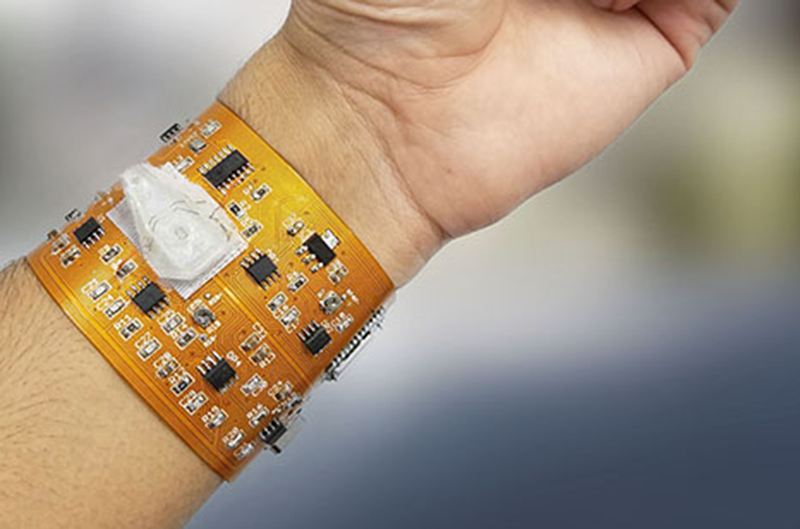Imagine a wristband that could detect diseases including cancer, or bacteria or other biohazards in the air or surfaces, and then wirelessly transmit its findings to the user’s smartphone and their doctor.
It could soon be possible. Researchers at Rutgers University-New Brunswick have created a smart wristband that can monitor personal health conditions using biosensor technology. The technology analyzes microscopic blood sample, and then transmits the data to the doctor, hospital or the patient’s phone. Researchers believe it can be used in watches and other wearable devices designed to monitor heart rates and physical activity.
Read more German Researchers Develop Sensor-Packed Wristband to Improve Lives of Dementia Patients
“It’s like a Fitbit but has a biosensor that can count particles, so that includes blood cells, bacteria and organic or inorganic particles in the air,” said Mehdi Javanmard, senior author of the study and assistant professor in the Department of Electrical and Computer Engineering in the School of Engineering.
Lead author Abbas Furniturewalla said the wearables currently available in the market can measure only a few physical parameters like heart rate and exercise activity. “The ability for a wearable device to monitor the counts of different cells in our bloodstream would take personal health monitoring to the next level,” said Furniturewalla, who’s a former undergraduate researcher in the Department of Electrical and Computer Engineering at Rutgers.
The plastic wearable device can track blood cells. It has a flexible circuit board and a biosensor with a channel, or pipe, thinner than the diameter of a human hair with gold electrodes embedded inside. A circuit is included to process electrical signals, along with a micro-controller to digitize data and a Bluetooth module to wirelessly transmit the data.
Blood samples are obtained through pinpricks, with the blood fed through the channel and blood cells counted. The data are sent wirelessly to an Android smartphone with an app that processes and displays data, and the technology can also work in iPhones or any other smartphone.
Potential Usage
The device could be used by healthcare professionals in the field, offices or hospitals, to get rapid blood test results from patients, without the need for expensive, bulky lab-based equipment. Blood cell counts can be used to diagnose illness; low red blood cell counts, for instance, can be indicative of internal bleeding and other conditions.
“There’s a whole range of diseases where blood cell counts are very important,” Javanmard said. “Abnormally high or low white blood cell counts are indicators of certain cancers like leukemia, for example.”
Read more Maxim Enables a Healthier World with Health Band and ECG Monitor
Javanmard said next-gen wristbands could be used in a various environmental application, where patients would be able to continuously monitor their health and send results to physicians remotely.
“This would be really important for settings with lots of air pollutants and people want to measure the amount of tiny particles or dust they’re exposed to day in and day out,” Javanmard said. “Miners, for example, could sample the environment they’re in.”













